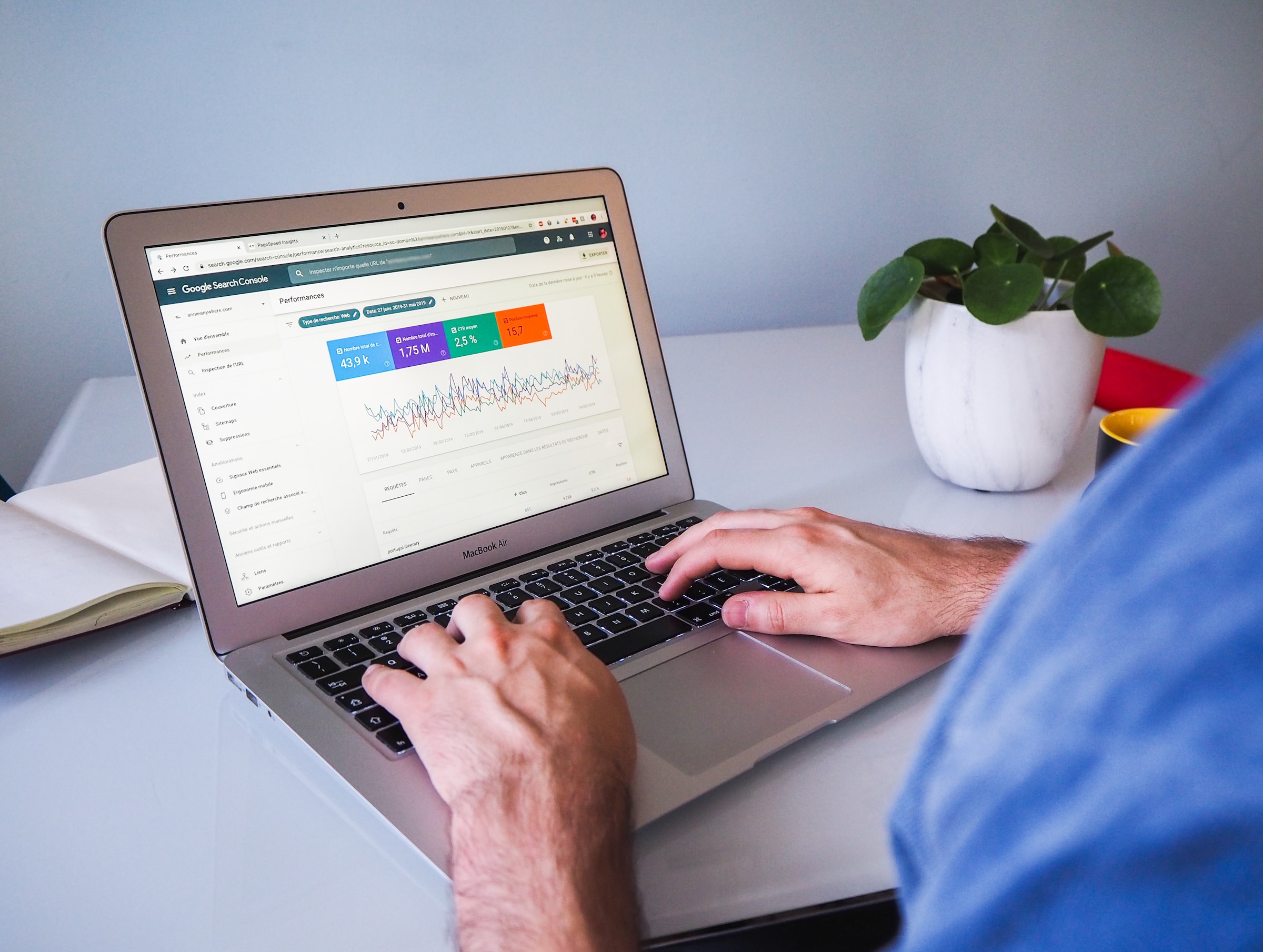When checking how well a website is performing, being able to track its traffic is a crucial metric. Today, Google Analytics is one of the most popular tools among marketers to do so. Before we get into the details, however, let’s first look at the stats to see just how impressive this platform is.
- As of this year, 28.1 million websites – 55.49% of all websites worldwide – use Google Analytics.
- Moreover, 84% of websites that employ website tracking tools use Google Analytics.
So what is Google Analytics?
Google Analytics is an exceptional web analytics tool that offers invaluable insight into user behavior and website performance. It allows businesses to track website traffic and analyze various metrics to make data-driven decisions. With the increasing importance of digital presence, website tracking has become indispensable for businesses wanting to understand their online audience and optimize their strategies.
I. Key Metrics and Reporting
Overview of Google Analytics metrics and dimensions
Google Analytics offers a wide range of valuable metrics and dimensions to help businesses and/or marketers understand their website’s performance. Metrics are quantitative measurements, and include categories such as ‘number of visitors,’ ‘bounce rate,’ ‘page views,’ and ‘conversion rate.’ Dimensions provide context to the metrics by categorizing data, such as the device used, traffic source, or geographic location.
By analyzing these metrics and dimensions, businesses can gain valuable insights into how their website is performing and make informed decisions to optimize their online presence.
Real-time tracking and reporting
One of Google Analytics’s most useful features is its real-time tracking and reporting capabilities. This allows businesses to monitor website activity as it happens, providing instant visibility into visitor behavior, traffic sources, and content engagement.
II. Advanced features and customization
Photo by Myriam Jessier on Unsplash
Customizing reports and dashboards
Google Analytics offers the ability to customize reports and dashboards for specific business needs. Businesses can therefore create custom reports focusing on key metrics, dimensions, and segments, gaining deeper insights into website performance.
Custom dashboards allow businesses to create personalized views that display the most relevant data at a glance. These customizable features enable companies to focus on the metrics that matter most to their goals, allowing them to streamline their reporting process.
Setting up advanced segments for deeper analysis
Advanced segments in Google Analytics enable businesses to isolate and analyze specific subsets of data. By creating segments based on various criteria, such as demographics, traffic sources, or user behavior, brands can gain a deeper understanding of different audience segments and their engagement with the website.
This level of analysis helps businesses understand the effectiveness of specific marketing campaigns, identify high-value customer segments, and tailor their strategies accordingly.
Event tracking and tracking user interactions
Event tracking allows businesses to track specific user interactions on their website such as clicks on buttons, downloads of files, and/or video views. By setting up event tracking, businesses can gain insights into user engagement and measure the success of specific actions.
Tracking user interactions helps businesses understand how users interact with their websites and optimize their content and design to improve engagement and conversions.
Photo by Grzegorz Walczak on Unsplash
E-commerce tracking and revenue analysis
For businesses with e-commerce websites, Google Analytics provides robust e-commerce tracking capabilities. It allows businesses to track and analyze revenue, transactions, product performance, and other key e-commerce metrics.
With e-commerce tracking, companies can get to grips with their sales performance, identify popular products, track conversion funnels, and optimize their online stores to maximize revenue.
Cross-domain tracking and subdomain tracking
Cross-domain tracking is helpful for businesses that have multiple websites or domains. It enables businesses to track user behavior across domains and gain a holistic view of user interactions.
Similarly, subdomain tracking allows companies to track user activity across subdomains such as blogs or support portals. It helps businesses understand user behavior across various website sections and optimize each subdomain for better engagement.
These advanced features allow firms to delve deeper into their website analytics, uncover valuable insights, and customize their tracking to align with their unique business goals and objectives.
Real-time tracking is beneficial for monitoring the effectiveness of marketing campaigns, assessing the impact of website changes, or understanding user behavior during peak periods. Brands or marketers can leverage this information to make immediate adjustments and capitalize on opportunities in real time.
Audience insights and demographics
Google Analytics provides valuable audience insights, allowing businesses to understand their website visitors more effectively. It provides demographic information such as age, gender, and interests, enabling businesses to tailor their content and marketing efforts accordingly.
These audience insights help businesses identify their target audience, understand their preferences, and personalize their messaging to enhance engagement and conversions.
Acquisition sources and channels
Understanding where website traffic is coming from is critical for optimizing marketing efforts. Google Analytics tracks acquisition sources and channels, allowing businesses to identify which channels drive the most traffic and conversions.
By analyzing this data, marketers can allocate resources efficiently, invest in the most productive marketing channels, and optimize campaigns for better results.
Behavior flow and user engagement
Google Analytics also provides information about user behavior flow, demonstrating the figurative ‘path’ users take through the website and the pages they visit. This information helps businesses identify popular pages, understand user engagement, and optimize the user journey.
By analyzing behavior flow, businesses can identify potential drop-off points, improve website navigation, and enhance user experience, thereby increasing engagement and conversions.
Conversion tracking and goal setting
Conversion tracking is an important aspect of Google Analytics that allows businesses to measure the effectiveness of their marketing efforts. It enables businesses to track specific actions and goals that users complete including form submissions, purchases, and/or newsletter sign-ups.
By setting up conversion tracking and goals, marketers can measure their marketing campaigns’ success, identify improvement areas, and optimize their strategies to drive desired outcomes.
III. Data privacy and compliance
Photo by Saad Manzoor on Unsplash
Understanding data privacy regulations (e.g. GDPR, CCPA)
Data privacy has become a critical concern for businesses in today’s digital landscape. Regulations such as the General Data Protection Regulation (GDPR) in Europe and the California Consumer Privacy Act (CCPA) in the United States have been implemented to protect the rights and privacy of individuals.
Businesses using Google Analytics should be intimately familiar with these regulations and understand their responsibilities when collecting and processing user data. Familiarizing themselves with the key principles and requirements of data privacy regulations ensures compliance and helps build trust with website visitors.
Implementing privacy settings in Google Analytics
To align with data privacy regulations, Google Analytics provides privacy settings marketers can configure according to their compliance needs.
These settings include options to control data retention periods, IP anonymization, and data sharing with Google.
By adjusting these privacy settings, businesses can ensure that the data collected and processed by Google Analytics adhere to privacy regulations. It demonstrates a commitment to protecting user privacy and compliance with applicable laws also.
Obtaining user consent and ensuring data protection
For marketers, one important aspect of data privacy regulation that they should keep in mind is to obtain user consent before collecting and processing personal information. Companies using Google Analytics should implement mechanisms to obtain explicit user consent for tracking and analytics purposes.
This can be achieved in various ways, such as by employing cookie consent banners or pop-ups that inform users about data collection and seek their consent. By providing clear and transparent information about the purpose of data collection, and by allowing users to opt out when and if they choose, you will respect user privacy and build trust among potential customers.
Additionally, businesses must also ensure the security and protection of the data they collect through Google Analytics. Implementing appropriate safeguards such as encryption and access controls helps prevent unauthorized access, data breaches, and potential privacy violations.
By prioritizing data privacy and compliance while using Google Analytics, businesses can demonstrate their commitment to protecting user privacy and maintaining ethical data practices. It also ensures legal compliance and fosters trust and confidence among website visitors, leading to a positive user experience and stronger customer relationships.
In conclusion
Google Analytics is one of the most powerful analytics tools for tracking website traffic. It has numerous features and settings that can help brands track traffic and user behavior. By understanding and mastering what Google Analytics offers, marketers can stay on top of their game.





